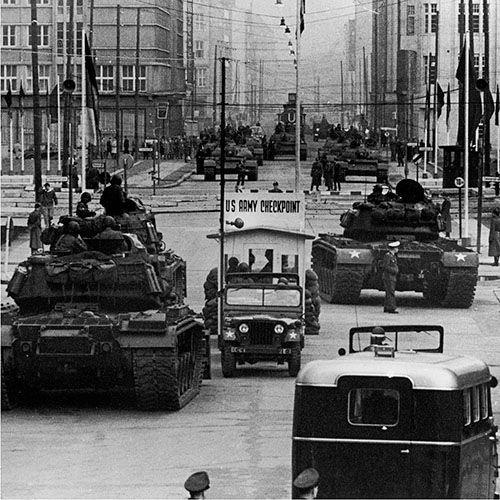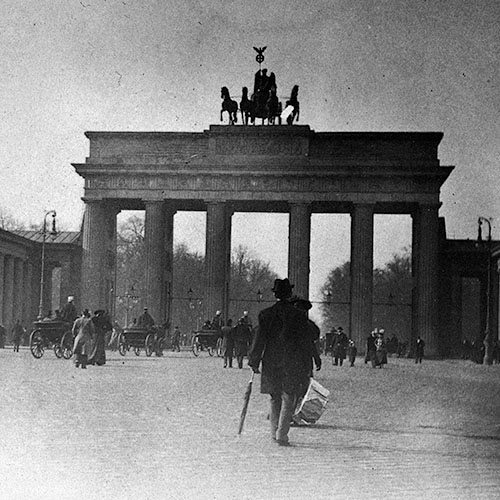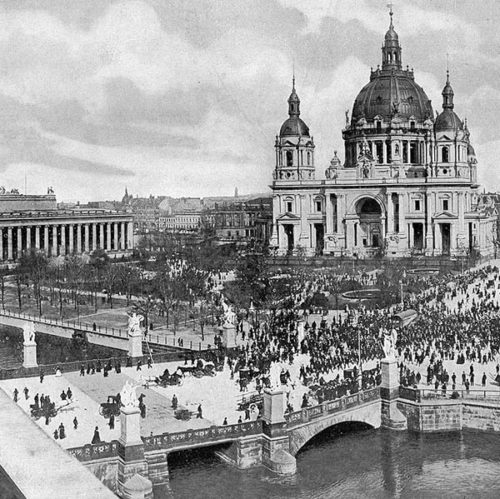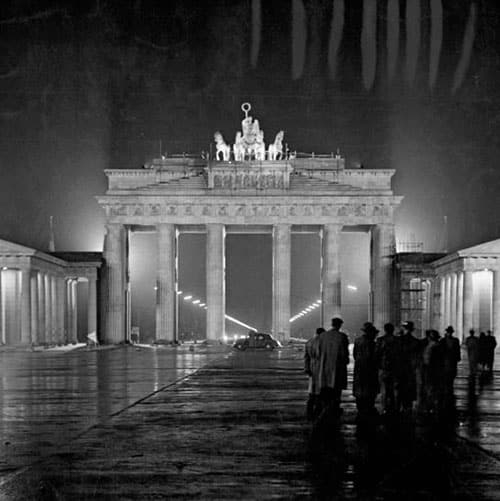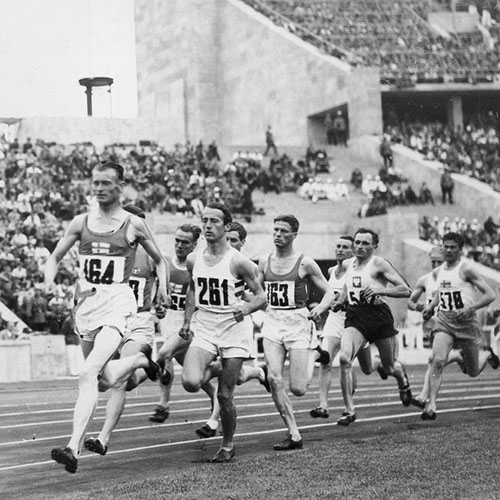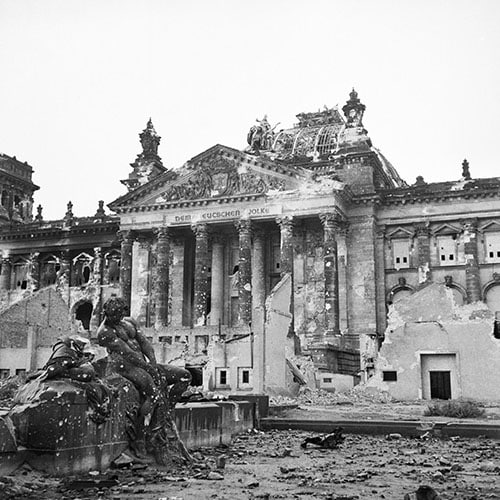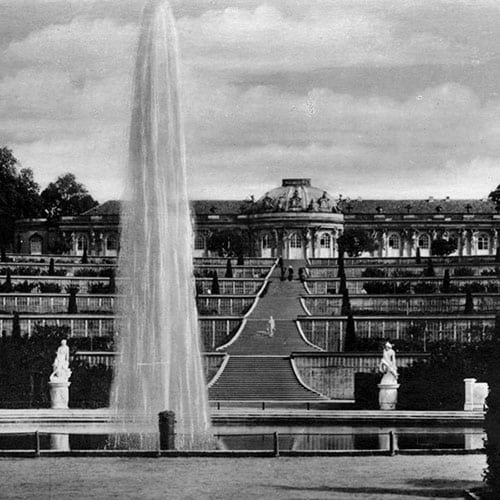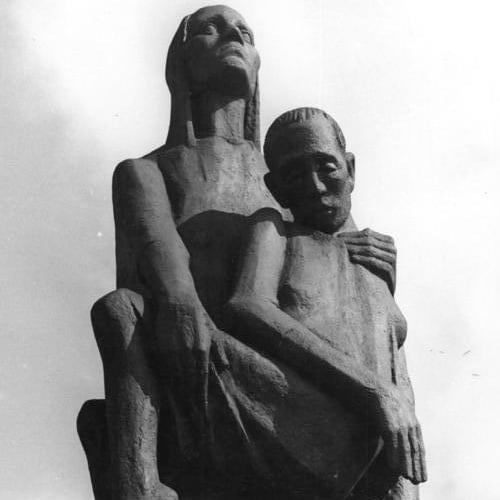“They failed, and because of their failure, their motives were long distrusted, their characters maligned, and their deeds denied… Yet their spirit survived, and in the end has triumphed.”
German historian, Joachim Fest, in the introduction to Plotting Hitler’s Death
The air in Munich’s Bürgerbräukeller was thick with the smell of stale beer, sweat, and fervent expectation.
It was November 8th 1939, the sixteenth anniversary of the failed ‘Beer Hall Putsch’, and Adolf Hitler was in his element.
For an hour and a half, he had held the assembled Alte Kämpfer (‘Old Fighters’) of the Nazi Party in a trance, his voice rising and falling in familiar cadences, recounting the sacred story of their movement’s origins. He spoke of sacrifice, of providence, and of the sixteen ‘blood martyrs’ who fell that day in 1923.
He was a man communing with his own myth.
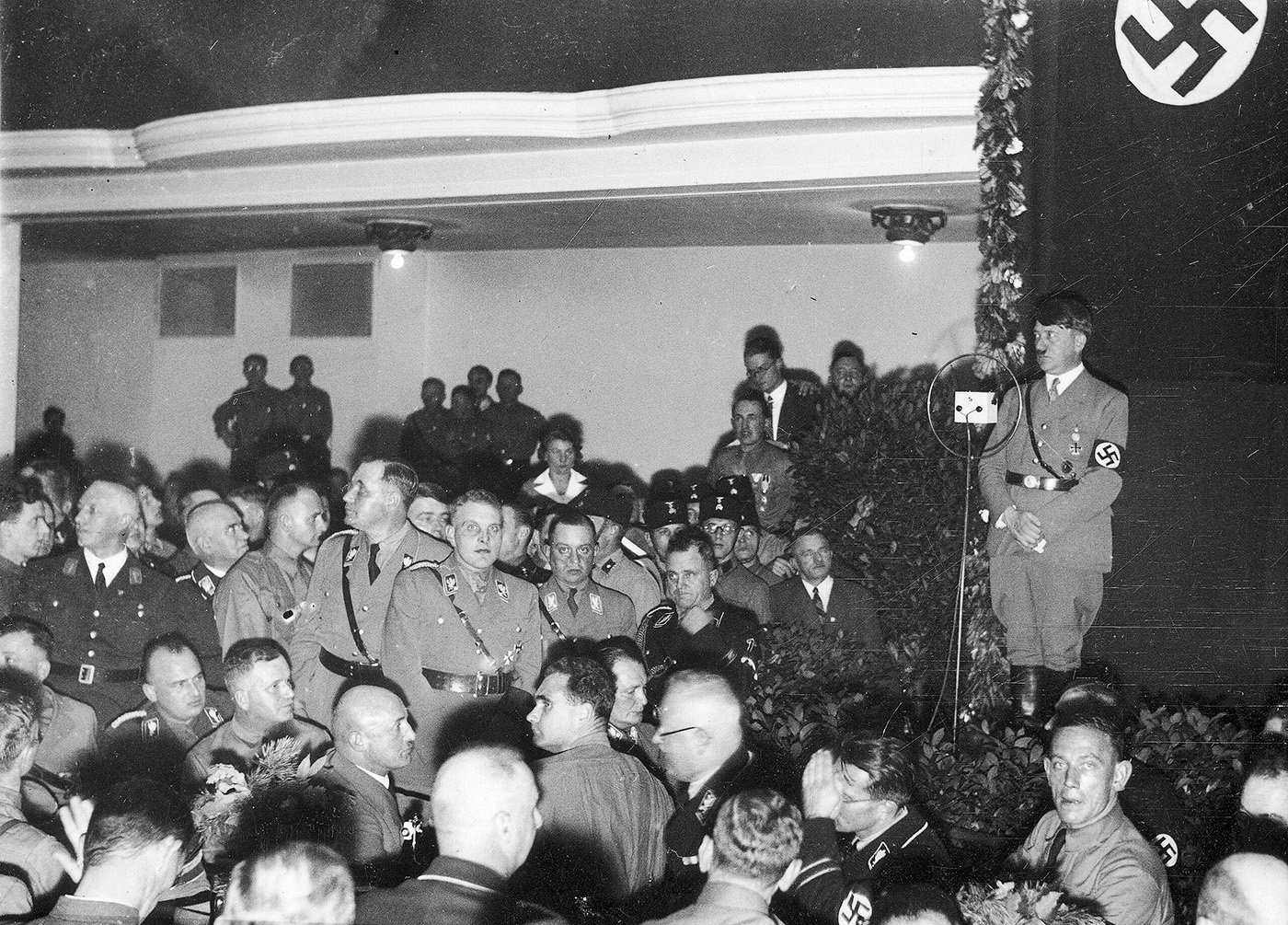
But as he concluded his speech, something was off.
Instead of lingering to press the flesh with his devoted followers, Hitler made a swift and uncharacteristic exit.
He had a train to catch, a special train laid on to take him back to Berlin.
The fog that had been predicted to ground his flight had forced a change of plans.
At 9:20pm, just as Hitler and his entourage were boarding their train, a deafening explosion ripped through the Bürgerbräukeller. The pillar behind the speaker’s rostrum, where Hitler had stood just minutes before, had been obliterated. The ceiling collapsed, and in the chaos of dust and screams, eight people lay dead or dying, with over sixty injured.
A lone carpenter, Johann Georg Elser, had missed his target by a mere thirteen minutes.
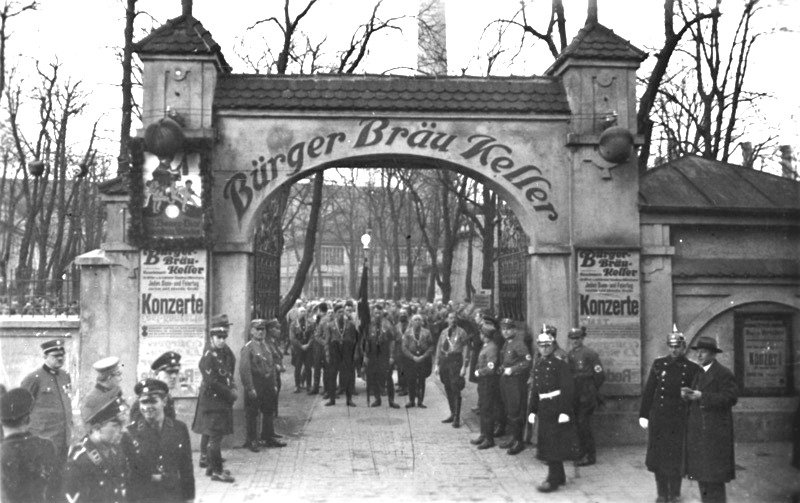
‘Providence’ had intervened.
Or had it?
This was not the first time, nor would it be the last, that a plot to kill Adolf Hitler would be foiled by a matter of minutes, a change of plans, or what many would come to call ‘the devil’s luck’.
The story of the attempts on Hitler’s life is more than a catalogue of failures; it is a journey into the heart of the Third Reich, revealing the courage of the few who resisted, and how close history came to taking a different path.
–
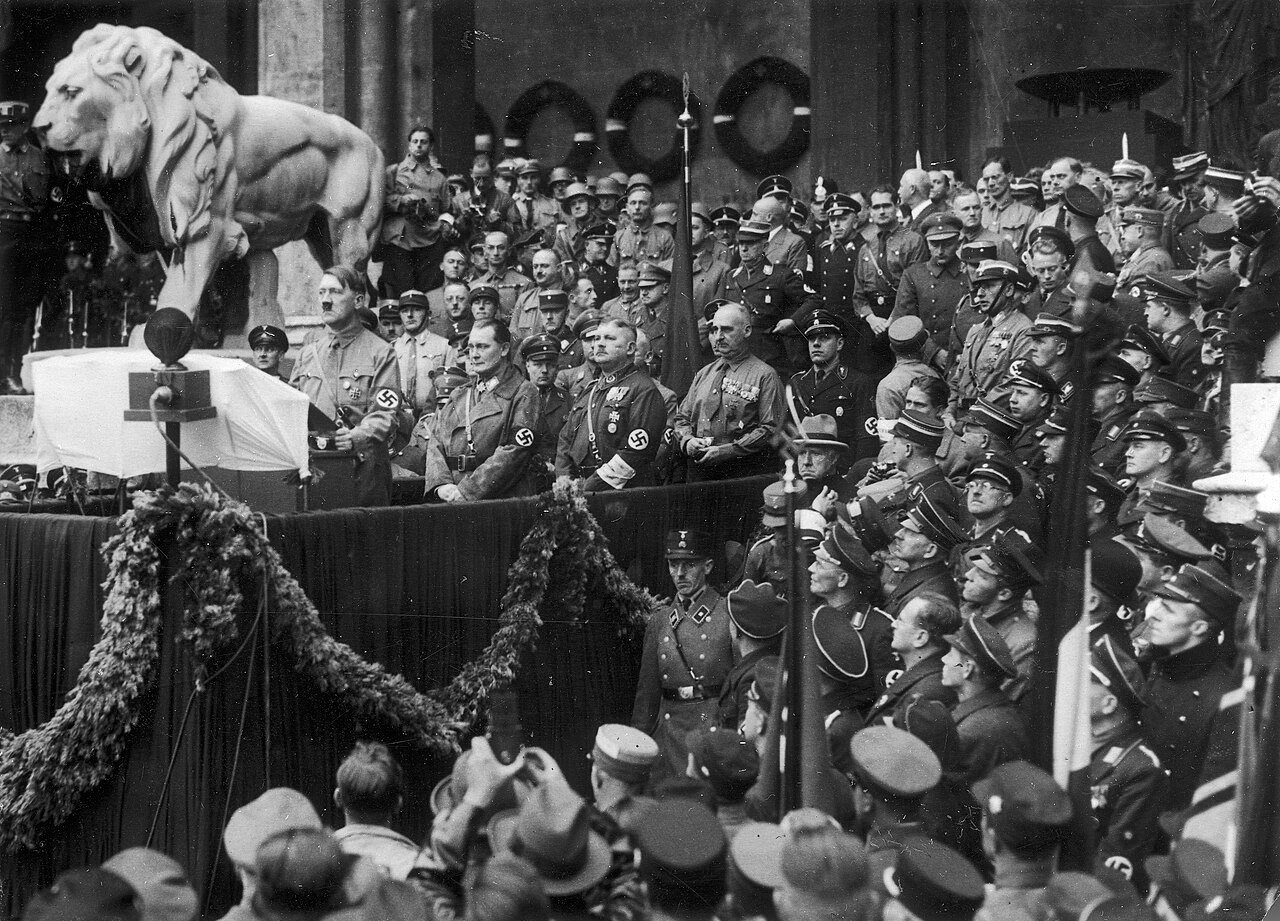
The Bloodstained Republic
“An atmosphere of civil war. The celebratory entry of the murderers into the Hotel Adlon is being talked about everywhere. Also how a large part of the public in the street and in the cafés openly sided with the murderers. It is an indescribable, suffocating, and tense atmosphere.”
Count Harry Kessler, diplomat and diarist, after the 1922 assassination of Foreign Minister Walther Rathenau
The Weimar Republic, the fragile democracy born from the ashes of Imperial Germany, was a crucible of political violence.
The air crackled with a tension that frequently erupted into street brawls, political assassinations, and putsches. This was the world that the nascent Nazi Party was born into, a world where the bullet was often seen as a legitimate political tool.
The idea of a politically motivated murder, a tool to destabilise and decapitate an enemy movement, was one that was all too familiar in the streets of 1920s Germany. Although, the term ‘assassination’ itself has a long and bloody history, derived from the ‘Hashshashin’- a secretive Nizari Ismaili sect in the mountains of Persia and Syria, who, during the 11th and 12th centuries, carried out targeted killings of their political and religious rivals.

The early years of the Weimar Republic were marked by a wave of political murders, overwhelmingly carried out by right-wing extremist groups.
Between 1919 and 1922, there were 376 political murders in Germany.
Of these, 354 were committed by the right-wing, and only 22 by the left.
The message was clear: the enemies of the old order, the democrats, socialists, and Jews who were blamed for the ‘stab in the back’ that had supposedly cost Germany the First World War, were fair game.
High-profile figures like the moderate Catholic politician Matthias Erzberger, who had signed the armistice agreement to end the First World War, and the Jewish Foreign Minister Walther Rathenau, were gunned down in broad daylight. These were not random acts of violence, but calculated attempts to terrorise political opponents and destabilise the fledgling republic.
The Nazis were both perpetrators and beneficiaries of this climate of violence.
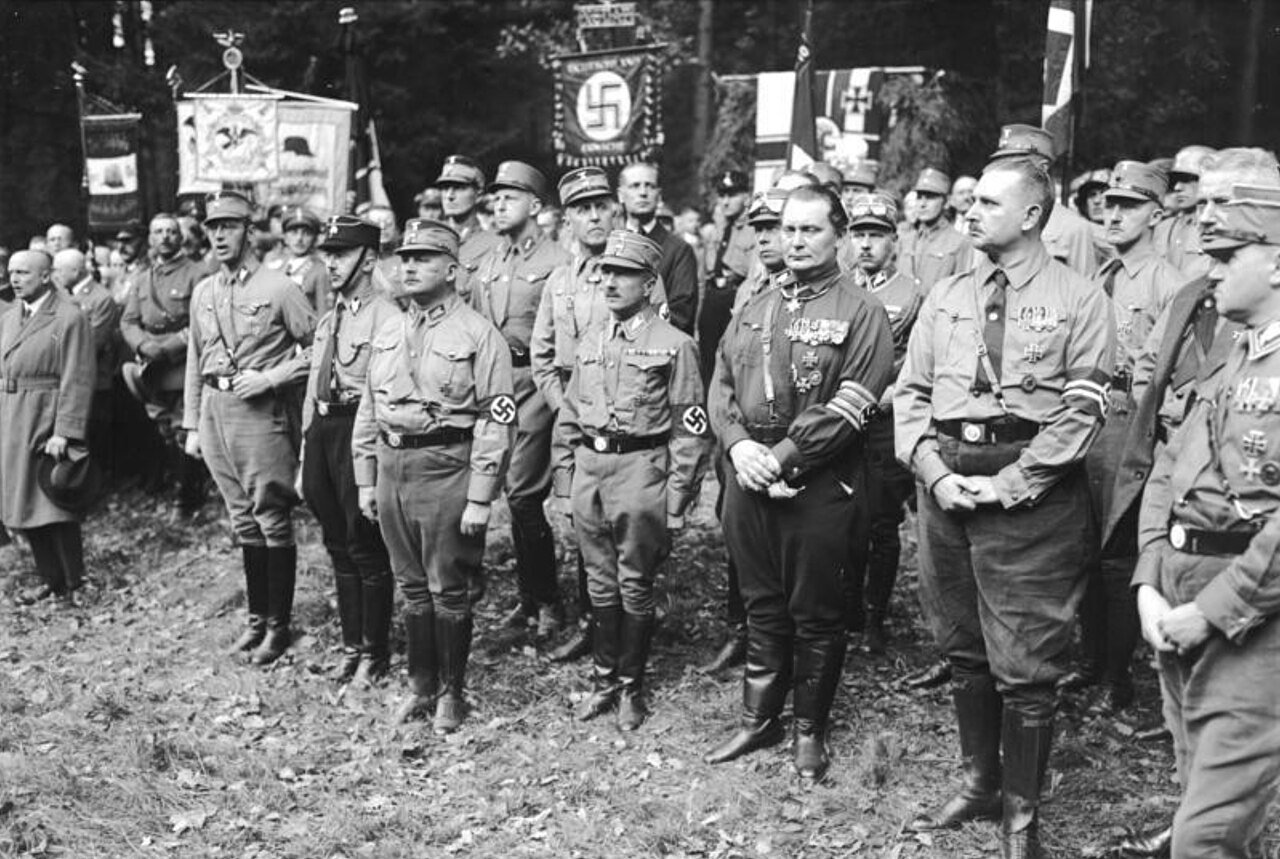
Their stormtroopers, the SA, were street fighters, their primary purpose to intimidate and assault their political rivals, particularly the Communists. The ‘Red Fighting League’ of the Communist Party was equally prepared to meet violence with violence, and the streets of Berlin, Hamburg, and other German cities became battlegrounds.
While both sides engaged in brutal street fights, the Nazis elevated their fallen to the status of martyrs, creating a powerful mythology of blood sacrifice for the cause.
–
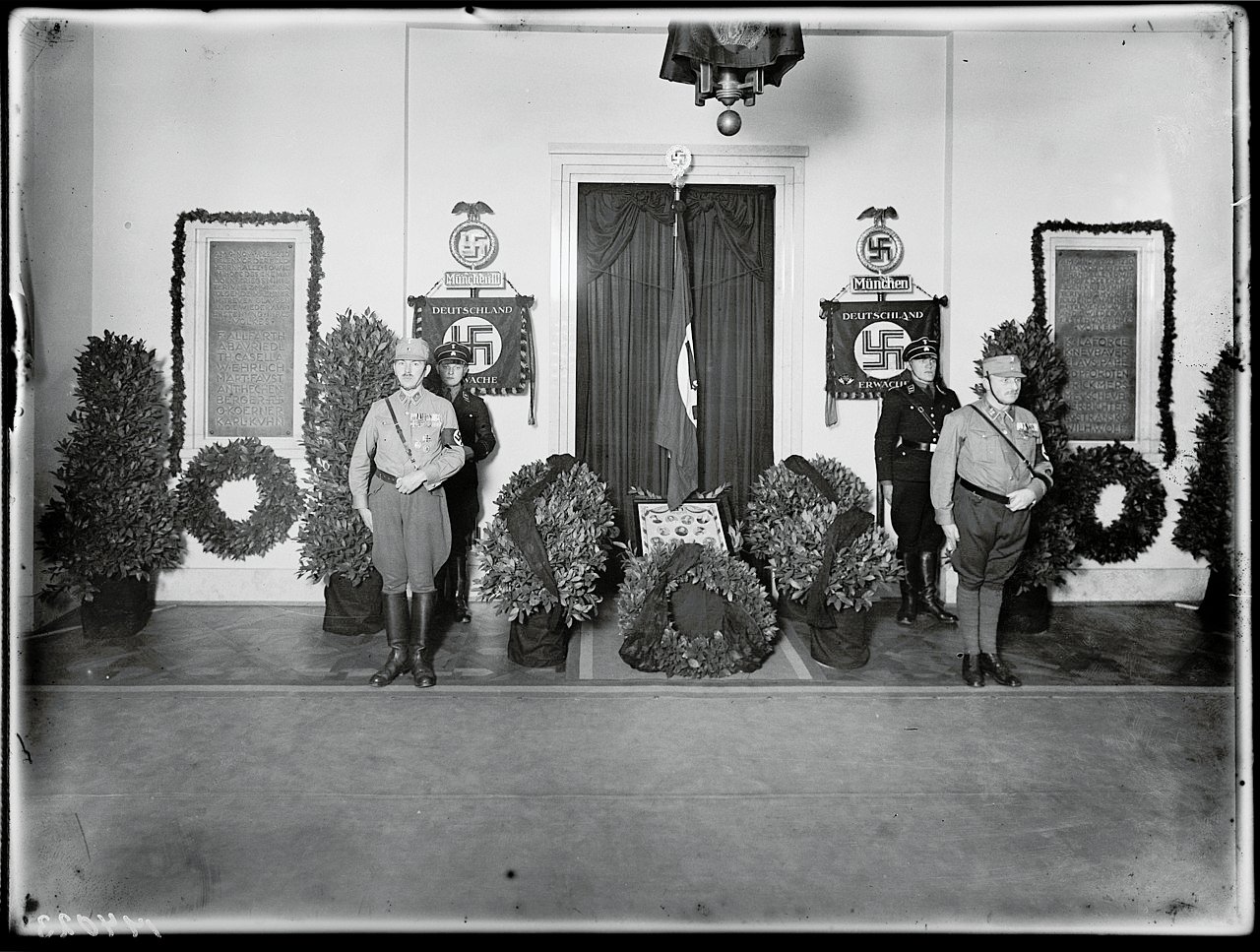
The Early Years Of Martyrdom
“Here lie the first martyrs of the German nation. They showed us the path. Now it is for us to follow it.”
Rudolf Hess, speaking at the 1935 dedication of the Ehrentempel (Honour Temples) in Munich
No figure exemplifies this strategy more than Horst Wessel.
A young SA stormtrooper and the son of a prominent Lutheran pastor, Wessel was a product of the disillusioned middle class that was drawn to the Nazi movement. He was also a pimp and a brawler who was killed in 1930 as a result of a squalid dispute over a prostitute.
The reality of his life proved irrelevant to the Nazi propaganda machine.
Joseph Goebbels, the Gauleiter of Berlin, saw an opportunity and seized it. Wessel was transformed into a “socialist Christ,” a pure-hearted idealist murdered by the “Jewish-Bolshevik” conspiracy.
The song he had written, ‘Die Fahne hoch’ (“Raise the Flag High”), became the anthem of the Nazi Party, second only to the national anthem. Wessel became the ultimate martyr, his name invoked at party rallies and his story taught to schoolchildren.
This cult of martyrdom was central to the Nazi identity, and it had its origins in the Beer Hall Putsch of November 9th 1923.
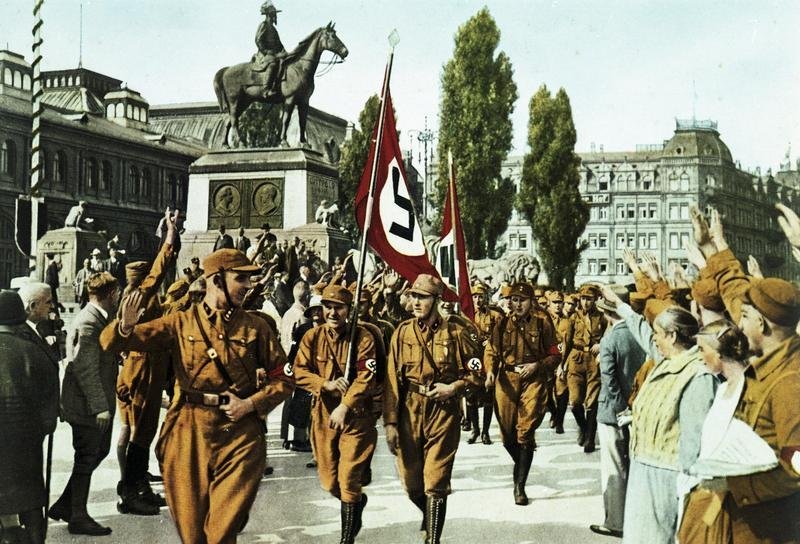
The image of the sixteen Nazis who were shot down by the Bavarian police in front of the Feldherrnhalle in Munich became the foundation myth of the Nazi movement. These men were the ‘blood martyrs’, and their names were read out at every party rally as if they were still present. Their ‘blood flag’ – stained with the blood of the fallen – was used to consecrate new party standards in a quasi-religious ceremony.
This powerful blend of political violence and religious-like ritual was a key element of Nazism’s appeal.
Given this environment, it is not surprising that Hitler himself became a target.
From the earliest days of his political career, he was a marked man.
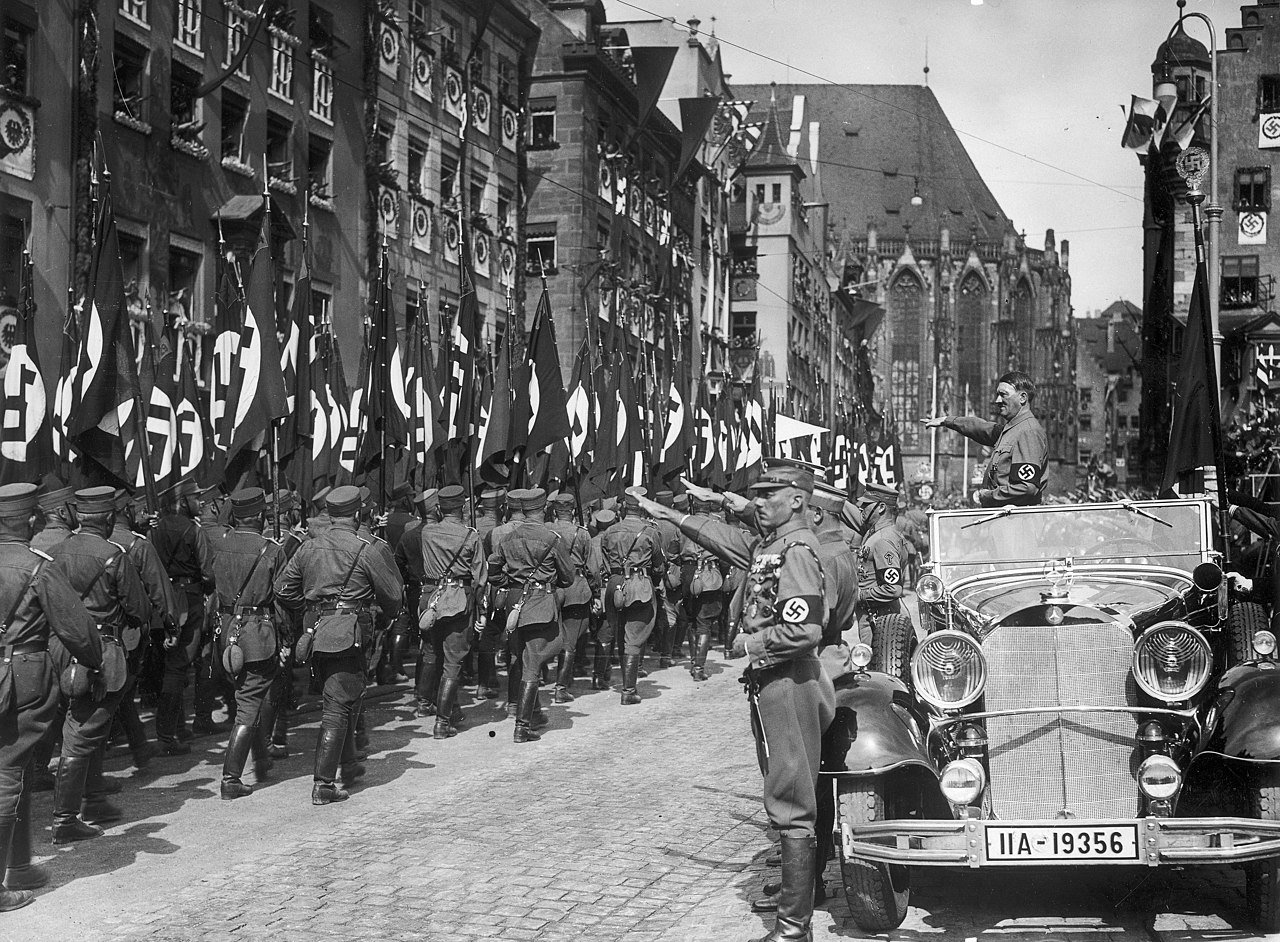
As early as 1921, there were reports of shots being fired at him during a speech.
After he became Chancellor in 1933, the threats intensified.
The ‘Kapplergrube’, a notorious gang of Berlin criminals, planned to assassinate Hitler in 1933.
A disgruntled former Nazi, Ludwig Assner, attempted to kill Hitler in 1934.
There were plans to poison him, to shoot him, to bomb him.
Most of these early plots were amateurish and easily foiled by Hitler’s ever-present and increasingly efficient security detail, the Reichssicherheitsdienst (RSD). But they reveal a constant undercurrent of opposition, a recognition that this new regime could perhaps be brought down by a single, well-aimed bullet.
The most significant attempt on Hitler’s life before the outbreak of the Second World War was that of the Swiss theology student Maurice Bavaud.

In November 1938, Bavaud travelled to Munich with the intention of shooting Hitler during the annual march commemorating the Beer Hall Putsch. He believed that Hitler was a danger to Christianity and to humanity itself.
Posing as a journalist, he managed to get a prime spot along the route, but he was unable to get a clear shot.
He aborted the attempt but was later arrested on a train.
Under Gestapo interrogation, he confessed his plan and was executed in 1941.
His story, like that of many of the lone assassins, is one of quiet conviction and ultimate failure. It also highlights the extreme difficulty of getting close to Hitler, who was becoming increasingly paranoid and security-conscious.
His movements became more and more unpredictable, his schedule changed at the last minute, and he was surrounded by a phalanx of guards.
It would take a different kind of plot, one of meticulous planning and inside knowledge, to have any real chance of success.
By the time of Bavaud’s attempt in 1938, this more significant plot was already being hatched, not by a lone idealist, but by a quiet, unassuming carpenter from the Swabian Alps.
–
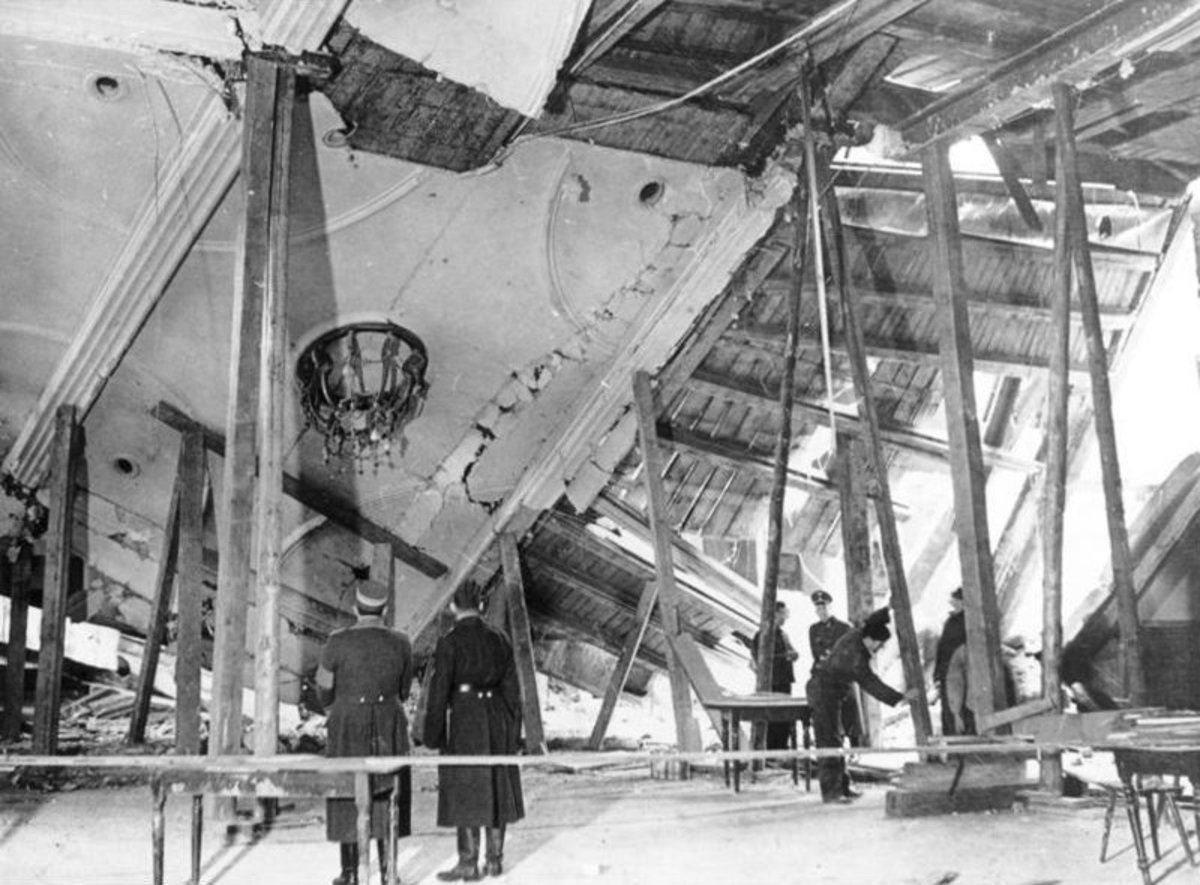
The Bomb In The Beer Hall
“I wanted, through my act, to prevent a still greater bloodbath. I reasoned a long time about this, and came to the conviction that the situation could only be changed by the elimination of the current leadership.”
Johann Georg Elser, during his Gestapo interrogation in 1939
Johann Georg Elser was a man who, in the words of one historian, “saw what others refused to see.”
He was not a communist, a socialist, or a member of any political party.
He was a skilled craftsman, a musician, and a man with a strong sense of justice.
He had seen what the Nazis were doing to Germany: the persecution of the Jews, the suppression of the trade unions, the relentless march towards war.
He believed that if he could kill Hitler, he could prevent a “greater bloodbath”.
In the autumn of 1938, Elser made his decision.
He would assassinate Adolf Hitler.
His plan was as audacious as it was simple.
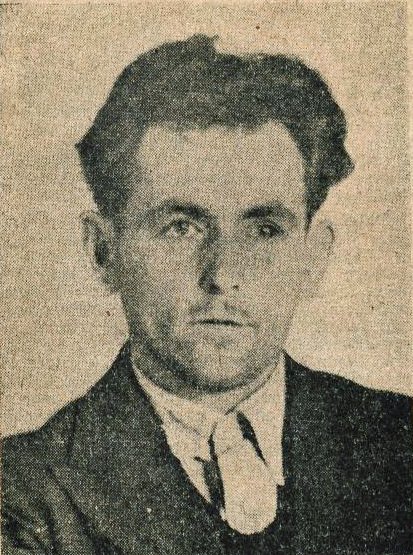
He knew that Hitler returned to the Bürgerbräukeller in Munich every year on November 8th to commemorate the Beer Hall Putsch. He decided he would plant a bomb there.
He got a job in a quarry, which gave him access to explosives. For over a year, he meticulously planned his attack. He designed and built a sophisticated time bomb with two separate clock mechanisms to ensure it would detonate.
For over thirty nights, between August and November 1939, Elser would sneak into the Bürgerbräukeller. After the hall was locked for the night, he would hide until everyone had left. Then, for hours on end, he would painstakingly hollow out a cavity in the pillar behind the speaker’s rostrum. He worked by the light of a small torch, his only tools a hammer and chisel.
He even lined the cavity with cork to muffle the ticking of the clock.

On the night of November 7th, the night before Hitler’s speech, Elser placed the bomb in the pillar. He set the timer for 9:20pm the following day, a time when he calculated Hitler would be in full flow.
But Hitler, who had originally planned to speak for two hours, cut his speech short. He had to get back to Berlin to plan the invasion of France, and the weather had forced him to take the train instead of a plane.
He finished his speech at 9:07pm and left the hall at 9:13pm.
At 9:20pm, Elser’s bomb exploded with devastating force.
It was a perfectly executed plan, thwarted by a last-minute change of schedule.

Elser was arrested by chance near the Swiss border.
He had incriminating evidence on him, including a postcard of the Bürgerbräukeller and a piece of a fuse.
He was taken to Gestapo headquarters in Berlin, where he was brutally tortured. He confessed, but the Gestapo refused to believe he had acted alone.
They were convinced he was part of a wider conspiracy, probably involving British intelligence. He was held as a ‘special prisoner’ for the rest of the war, first at Sachsenhausen and then at Dachau concentration camps. In the final weeks of the war, as the Allied armies closed in, the order came from Berlin to execute him. Georg Elser was shot in the back of the neck on April 9th 1945, just a few weeks before the end of the war in Europe.
For years after the war, he was dismissed as a crank or a Gestapo stooge. It was only in the 1960s that his story was rediscovered and he was finally recognized as a true hero of the German resistance.
–
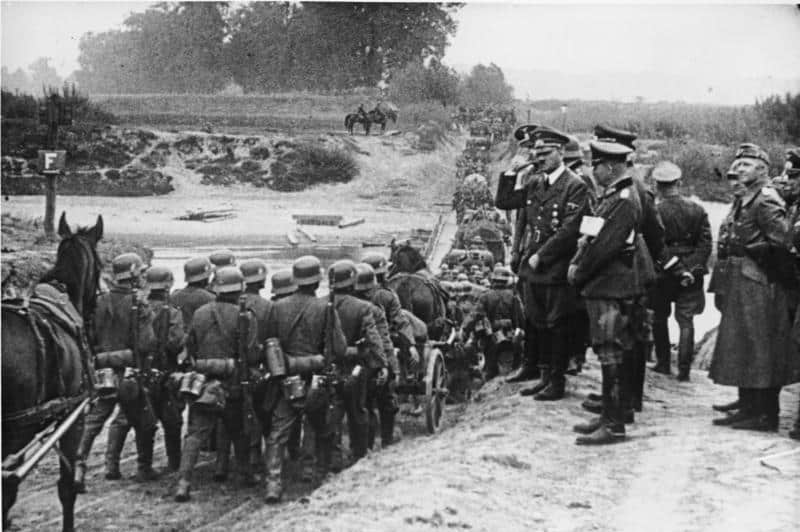
The War Years
“My decision to kill him in this manner was made out of the realization that this was perhaps the only way to break the hypnotic spell he held over the German people.”
Rudolf von Gersdorff, on his aborted 1943 attempt to kill Hitler
The outbreak of war in September 1939 made the task of assassinating Hitler both more urgent and more difficult.
The Führer became even more reclusive, spending most of his time at his heavily guarded military headquarters, the ‘Wolf’s Lair’ in East Prussia, or at his Alpine retreat, the Berghof.
But the war also brought a new group of potential assassins into play: the military.
Disillusioned with Hitler’s increasingly erratic leadership and horrified by the atrocities being committed in their name, a small but growing number of senior officers began to contemplate a coup.
The central figure in this period of military resistance was Henning von Tresckow, a brilliant staff officer on the Eastern Front. A man of deep moral conviction who had come to believe that it was his duty to kill Hitler.
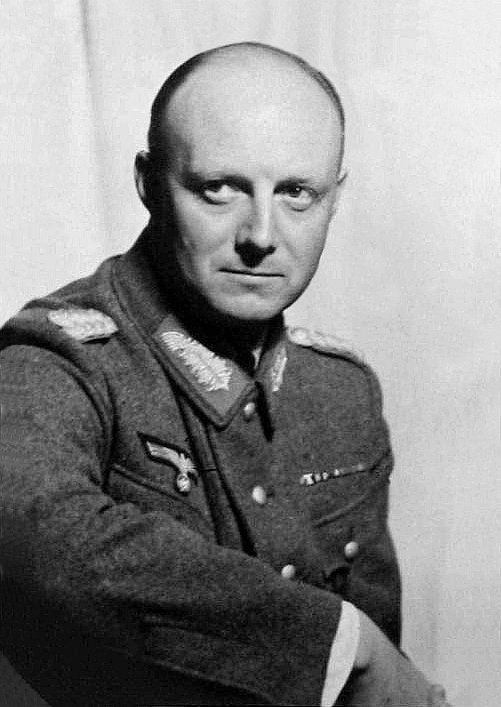
In March 1943, Tresckow and a group of co-conspirators put a plan into action.
They would plant a bomb on Hitler’s plane.
Tresckow’s aide, Fabian von Schlabrendorff, managed to place an explosive device, disguised as two bottles of Cointreau, on the plane that was taking Hitler back to Germany from a visit to the Eastern Front.
The bomb had a chemical fuse that was designed to detonate after thirty minutes.
The conspirators waited anxiously for news of a plane crash.
But nothing happened.
The plane landed safely.
In a moment of breathtaking audacity, Schlabrendorff flew to Hitler’s headquarters the next day and retrieved the package, claiming he had mistakenly given the Führer the wrong one.
When he later examined the bomb, he found that the fuse had worked, but the detonator cap had failed, probably because of the extreme cold in the unheated cargo hold.
Once again, ‘providence’ had intervened.
Just a week later, another attempt was made.
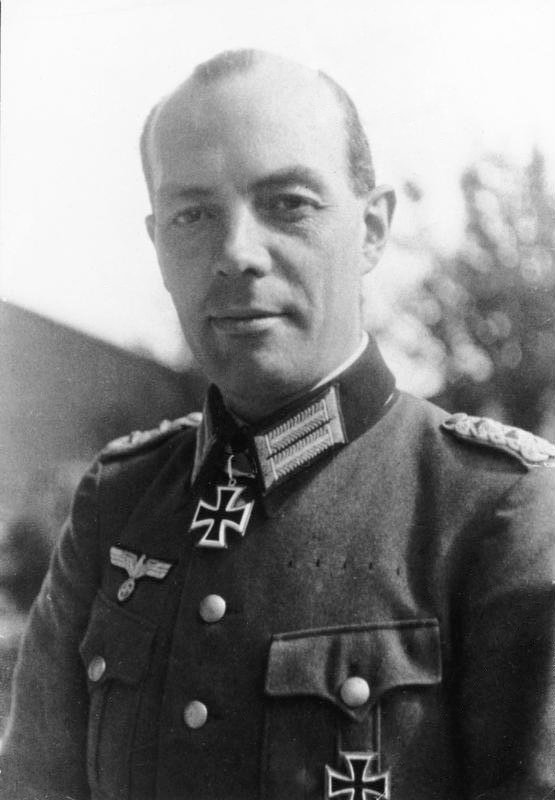
This time, a young officer named Rudolf Christoph Freiherr von Gersdorff was to act as a suicide bomber.
Hitler was scheduled to visit an exhibition of captured Soviet weapons at the Zeughaus in Berlin. Gersdorff, who was a demolitions expert, armed a bomb in the pocket of his greatcoat. He planned to stay as close to Hitler as possible and blow himself up, taking the Führer with him.
But Hitler was in a hurry.
He raced through the exhibition in a matter of minutes, and Gersdorff was unable to stay close enough to him for long enough. He just managed to get to a toilet and defuse the bomb with seconds to spare.
These were just two of a number of military plots that were planned between 1939 and 1944.
There were plans to shoot Hitler, to ambush his car, to blow him up. But they were all frustrated by a combination of bad luck, Hitler’s unpredictable movements, and the difficulty of getting a bomb or a weapon close enough to him.
It was becoming clear that any successful attempt would have to come from someone who had direct access to the Führer.
That man was Colonel Claus Schenk Graf von Stauffenberg.
–
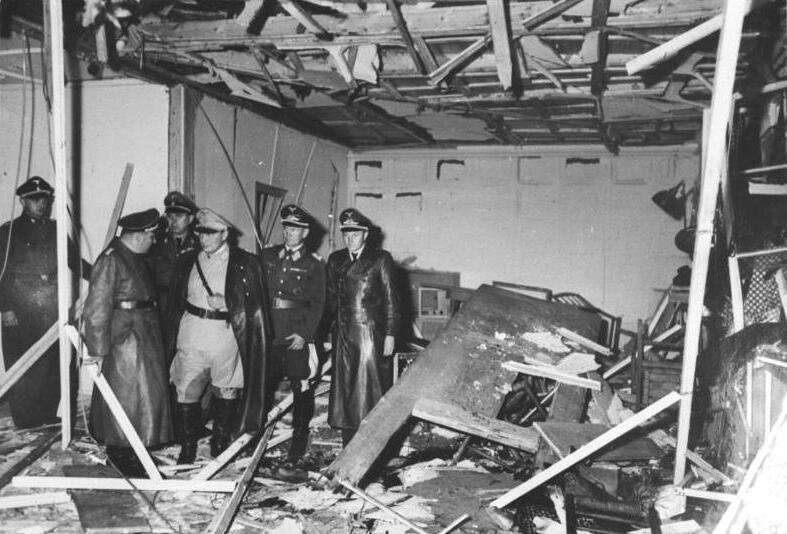
Operation Valkyrie
“When I reflect on it all, I see it as a wink of Providence. This afternoon Providence has told me so again… It has protected me, and I take this as a sign that I am destined to continue on my path.”
Adolf Hitler, July 20th 1944
July 20th 1944 is the date that is most famously associated with the attempts to assassinate Adolf Hitler.
It was the culmination of years of planning by a wide-ranging conspiracy of military officers, diplomats, and civil servants who had come to the conclusion that the only way to save Germany from total destruction was to kill Hitler and seize control of the state.
The central figure, the man who would carry the bomb, was Colonel Claus Schenk Graf von Stauffenberg.
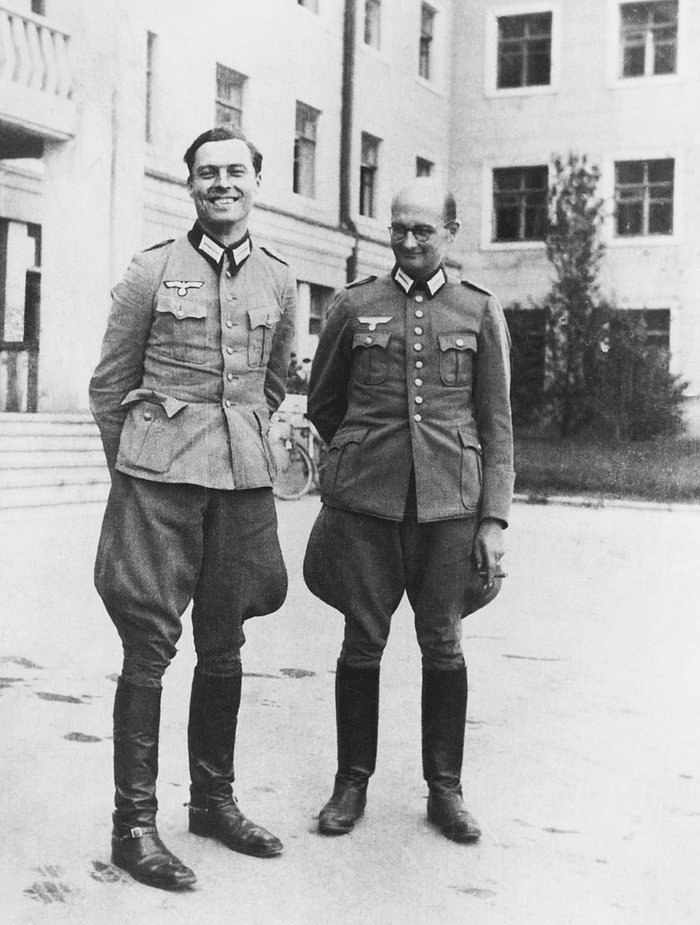
Stauffenberg was a charismatic and highly intelligent staff officer.
He was a man of action, and he had come to believe that all the talk and planning had to be translated into a deed.
After being severely wounded in North Africa, where he lost an eye, his right hand, and two fingers of his left hand, he was transferred to the Reserve Army in Berlin. This gave him direct access to Hitler at his military headquarters, the Wolf’s Lair.
The plan was for Stauffenberg to plant a bomb in a briefcase during a conference with Hitler. At the same time, the conspirators in Berlin would launch ‘Operation Valkyrie’, a plan that had been officially approved to put down an internal rebellion, but which they would use to seize control of the city and the government.
On July 20th 1944, Stauffenberg flew to the Wolf’s Lair.
He managed to arm one of the two bombs he had in his briefcase, a process made incredibly difficult by his injuries. The conference had been moved from a concrete bunker to a wooden hut, a change that would prove to be crucial. Stauffenberg placed the briefcase under the heavy oak table, as close to Hitler as possible. He then made an excuse to leave the room. At 12:42pm, the bomb exploded.
The hut was devastated.
Four men were killed, and many others were injured. But Hitler survived.
He was shielded from the full force of the blast by the heavy table leg. His trousers were in tatters, his eardrums were burst, but he was alive.

In Berlin, the coup began to unravel.
Confused messages came from the Wolf’s Lair.
Stauffenberg, who had seen the explosion and believed Hitler was dead, had flown back to Berlin. But it soon became clear that the Führer had survived. The conspiracy collapsed. Stauffenberg and his fellow conspirators were rounded up and shot that same night in the courtyard of the Bendlerblock, the military headquarters in Berlin.
His last words were reported to be “Long live our sacred Germany!”
Stauffenberg has become the symbol of the German resistance, but it is important to remember that he was not acting alone.

Thousands of people were involved in the plot, and in the brutal wave of reprisals that followed, over 7,000 people were arrested by the Gestapo, and around 5,000 of them were executed.
Many were subjected to show trials in front of the notorious ‘People’s Court’, presided over by the fanatical Nazi judge Roland Freisler.
They were humiliated, tortured, and then brutally executed, often by being hanged from meat hooks. The Nazi regime took its revenge on all those who had dared to defy it.
While Stauffenberg was the “face” of the plot, it is important to remember figures like his adjutant, Werner von Haeften, who helped him prepare the bomb and was executed alongside him, and the driving force of the military conspiracy, Henning von Tresckow, who committed suicide after the plot failed.
–

Der Untergang (The Downfall)
“The shaking in his left leg had become more intense; his left hand trembled… He walked awkwardly, with a stoop. Often he would lose his balance… His uniform was often spotted with food. His mental agility was likewise impaired. He had become verbose and showed a tendency to monologue.”
Albert Speer, in Inside the Third Reich
The 20th of July plot had a profound effect on Hitler.
He was already in declining health, and the physical and psychological shock of the assassination attempt accelerated his deterioration.
His right arm was temporarily paralysed, his eardrums were perforated, and he suffered from a persistent ringing in his ears.
But the real damage was to his psyche.
He became even more paranoid and reclusive, retreating into the fantasy world of the Führer bunker in Berlin.
He rarely appeared in public, and his speeches, which had once been the lifeblood of the Nazi movement, became few and far between. In the last year of his life, he gave only a handful of public addresses, and these were mostly short and delivered over the radio.
Compare this to the pre-war years, when he would give dozens of major speeches every year. The man who had once mesmerized a nation had become a stooped and shuffling wreck, ranting at his generals as the world came crashing down around him.
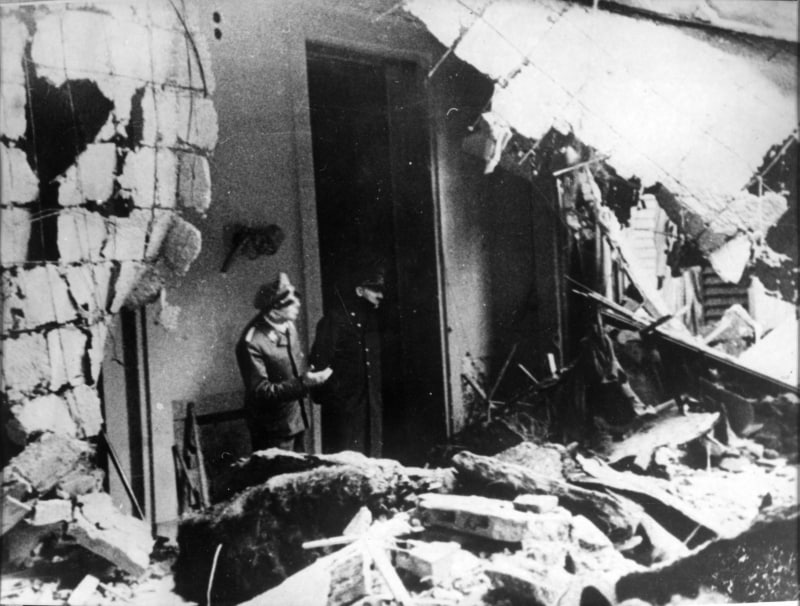
The 20th of July plot had a profound effect on Hitler.
He was already in declining health, and the physical and psychological shock of the assassination attempt accelerated his deterioration.
His right arm was temporarily paralysed, his eardrums were perforated, and he suffered from a persistent ringing in his ears.
But the real damage was to his psyche.
He became even more paranoid and reclusive, retreating into the fantasy world of the Führer bunker in Berlin.
He rarely appeared in public, and his speeches, which had once been the lifeblood of the Nazi movement, became few and far between. In the last year of his life, he gave only a handful of public addresses, and these were mostly short and delivered over the radio.
Compare this to the pre-war years, when he would give dozens of major speeches every year. The man who had once mesmerized a nation had become a stooped and shuffling wreck, ranting at his generals as the world came crashing down around him.
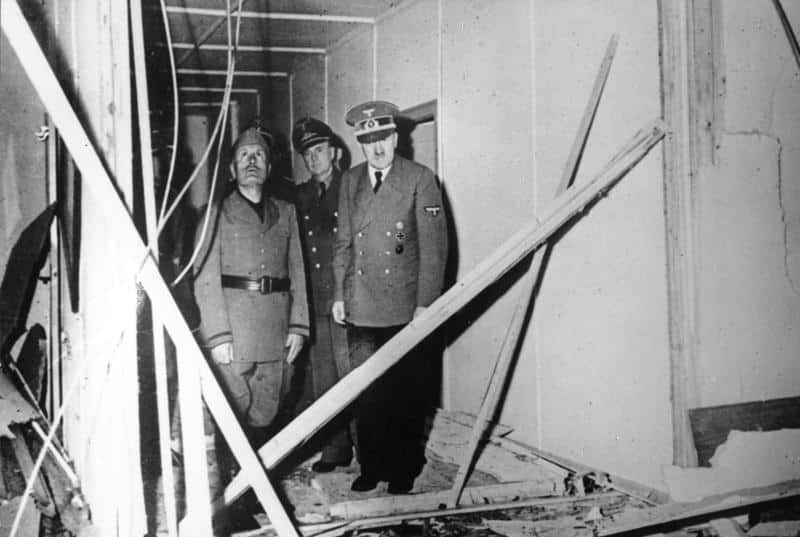
The failure of the 20th of July plot also sealed the fate of the German resistance.
The Gestapo’s brutal crackdown had destroyed their networks and eliminated their leaders. The opportunity for a coup was gone. The war would now grind on to its bitter and bloody conclusion, with millions more lives lost.
In the final days of the war, as the Red Army fought its way through the streets of Berlin, Hitler married his long-term mistress, Eva Braun, and then, on the 30th of April 1945, two days after Mussolini’s body was strung up by his feet in a Milan piazza, they committed suicide together in the Führerbunker.
The man who had survived so many attempts on his life finally took his own.
–
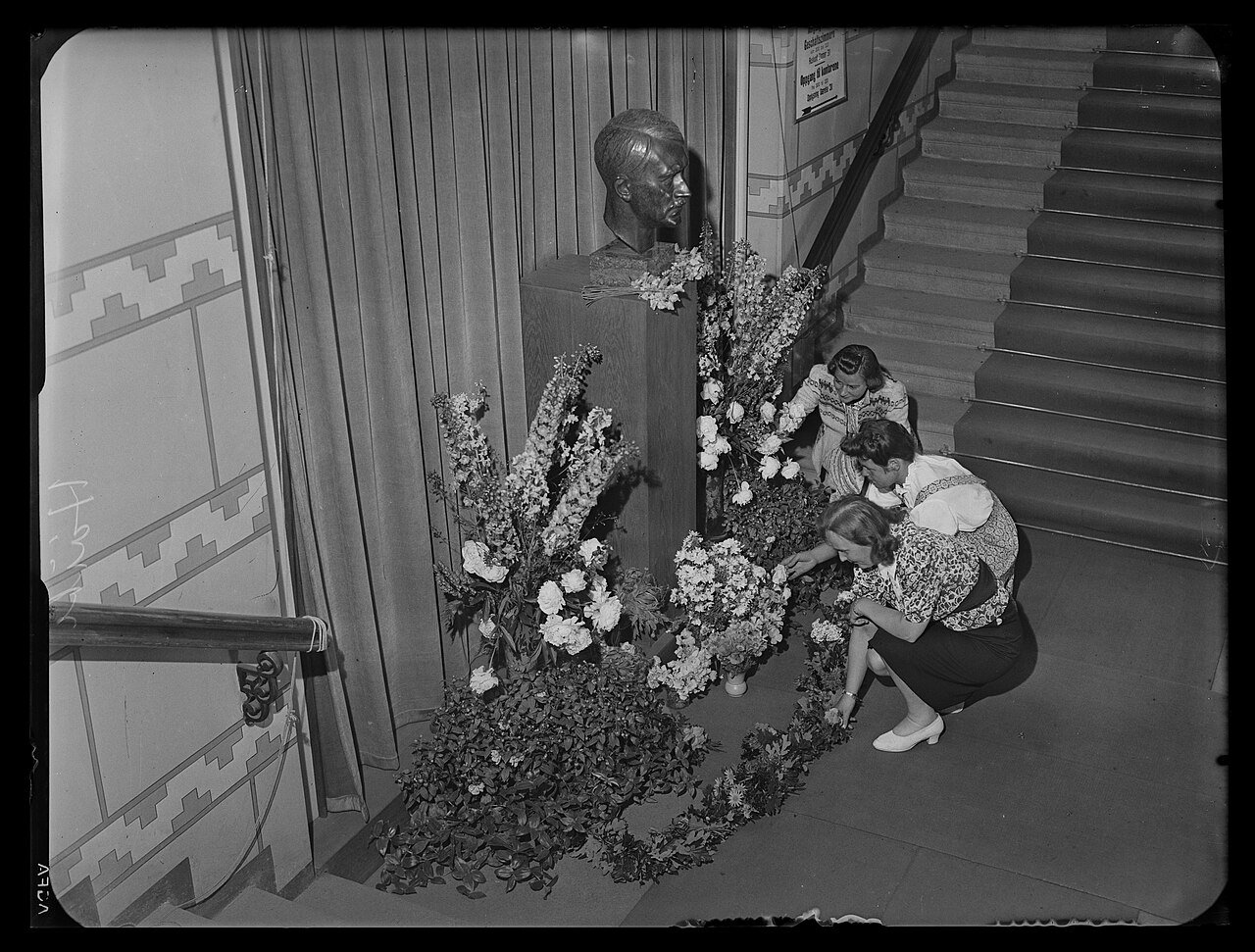
Conclusion
“His repeated survival reinforced in his own mind the sense of his Messianic mission. Providence, he came to believe absolutely, had singled him out for greatness, had chosen him as Germany’s saviour, and would not desert him.”
Ian Kershaw, historian, in Hitler: Nemesis
So, how many times did Hitler survive assassination?
The exact number is impossible to determine with certainty. There were many plots that never got off the ground, many ideas that were never put into action.
However, historians have documented at least 42 credible assassination attempts on Adolf Hitler.
These range from the lone attempts of individuals like Maurice Bavaud and Georg Elser to the complex military conspiracies that culminated in the 20th of July plot. It is a remarkable number, far higher than the number of attempts against other contemporary leaders like Churchill or Roosevelt.
When compared to other dictators, the number of known attempts on Hitler’s life is still staggering. While it is difficult to find precise figures, the number of attempts against Stalin, for example, is thought to be much lower, a testament to the brutal efficiency of his secret police. Saddam Hussein was notoriously paranoid and survived a number of attempts, but nothing on the scale of those against Hitler.
Perhaps the only 20th-century leader to rival Hitler in this grim league table is Fidel Castro, who the CIA famously tried to assassinate over 600 times.
The story of the attempts to kill Hitler is a story of what might have been. It is a story of incredible bravery and tragic failure.
But it is also a story that reminds us that even in the darkest of times, there are those who are willing to risk everything for what they believe is right. They may not have succeeded in their ultimate goal, but their actions stand as a powerful testament to the enduring power of the human conscience.
***
If you’ve enjoyed reading this article, consider booking one of our private guided tours of Berlin.
Bibliography
Evans, Richard J. The Coming of the Third Reich. Penguin Books, 2003.
Evans, Richard J. The Third Reich at War. Penguin Books, 2008.
Evans, Richard J. The Third Reich in Power. Penguin Books, 2005.
Fest, Joachim C. Plotting Hitler’s Death: The Story of the German Resistance. Metropolitan Books, 1996.
Friedrich, Thomas. Hitler’s Berlin: Abused City. Yale University Press, 2012.
Gisevius, Hans Bernd. To the Bitter End. 1947.
Hoffmann, Peter. The History of the German Resistance, 1933–1945. McGill-Queen’s University Press, 1996.
Kershaw, Ian. Hitler, 1889–1936: Hubris. W. W. Norton & Company, 1999.
Kershaw, Ian. Hitler, 1936–1945: Nemesis. W. W. Norton & Company, 2000.
Mazower, Mark. Hitler’s Empire: How the Nazis Ruled Europe. Penguin Press, 2008.
Moorhouse, Roger. Killing Hitler: The Plots, the Assassins, and the Dictator Who Cheated Death. Bantam Books, 2006.
Siemens, Daniel. The Making of a Nazi Hero: The Murder and Myth of Horst Wessel. 2013.
Thacker, Toby. Joseph Goebbels: Life and Death. 2009.
von Boeselager, Philipp Freiherr. Valkyrie: The Story of the Plot to Kill Hitler, by its Last Living Member. Weidenfeld & Nicolson, 2008.
von Schlabrendorff, Fabian. The Secret War Against Hitler. 1965.
HISTORICAL ARTICLES
Mythbusting Berlin
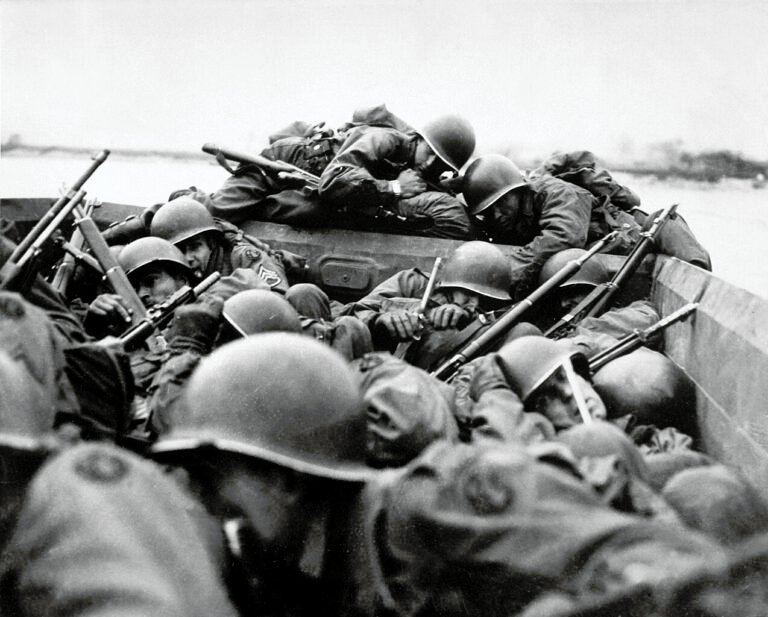
Could The Western Allies Have Captured Berlin? – Mythbusting Berlin
To contemplate a Western Allied capture of Berlin in 1945 is to challenge the established endgame of the Second World War. What was the true military and logistical feasibility of a Western Allied assault on the Nazi capital? What factors truly sealed Berlin’s fate, and what might have changed had the Allies pushed eastward?
Answering these questions means delving into the complex interplay of logistics, political maneuvering, and the competing visions for a post-war world
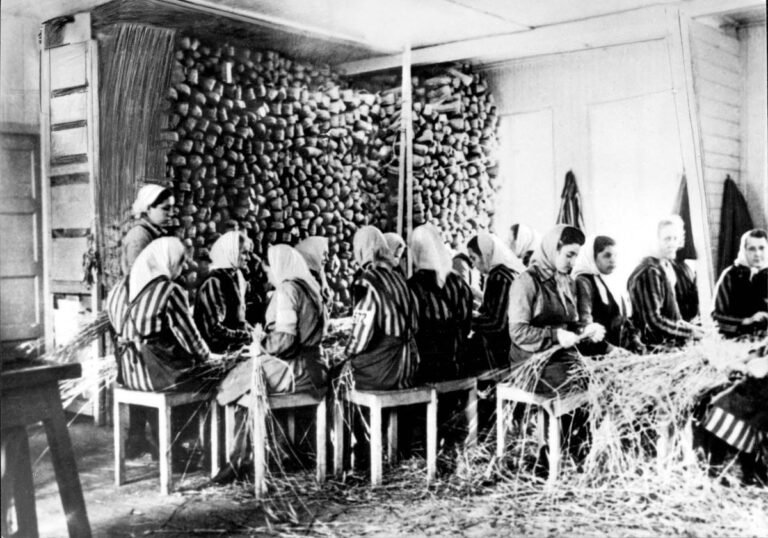
Did Any Of The Rothschild Dynasty Die In The Holocaust? – Mythbusting Berlin
The Rothschild name is synonymous with immense wealth, influence, and persistent conspiracy theories—especially during the era of Nazi Germany. Often targeted by antisemitic propaganda, the family’s survival during World War II has sparked myths about their supposed immunity from Nazi persecution. But did any Rothschild family member actually perish in the Holocaust? This article explores that compelling question, unraveling historical misconceptions and revealing the reality behind one of Europe’s most famous dynasties.
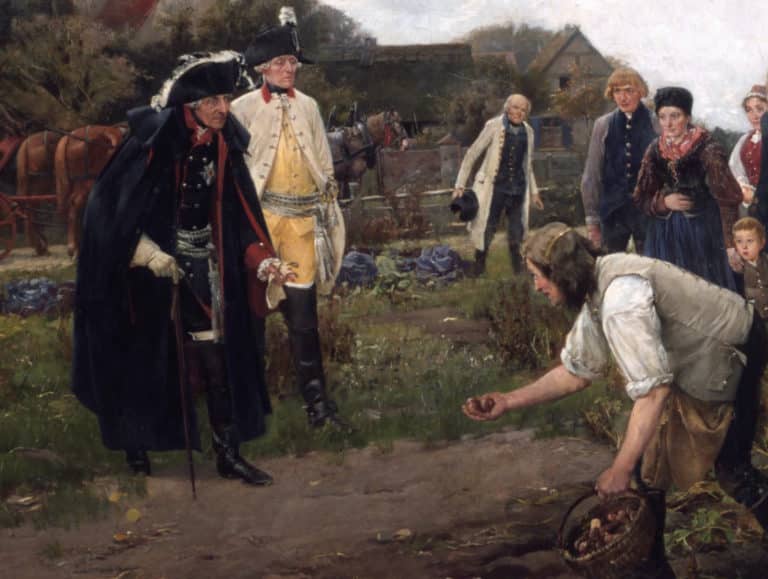
Did Frederick The Great Introduce The Potato To Germany? – Mythbusting Berlin
One of the more bizarre claims to fame attributed to the first King of Prussia is that the man who would go down in history known as Frederick the Great introduced the potato to Germany during his reign back in the 1700s. This starchy root vegetable has undoubtedly become a staple part of German cuisine – an essential addition to any plate of Schnitzel, Schweinshaxn, and Königsberger Klopse – however, whether Frederick the Great is
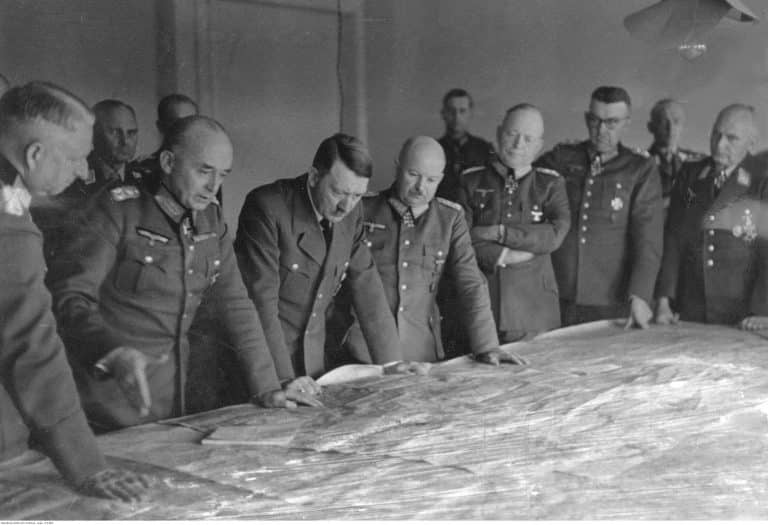
Did Hitler Escape To Argentina In 1945? – Mythbusting Berlin
Although Nazi leader, Adolf Hitler, certainly remains an inescapable figure, could there be any truth to the story of his escape to Argentina in 1945? That the most wanted man on earth could simply vanish, to spend the rest of his life peacefully in South American obscurity captivates imaginations. Yet, despite numerous investigations, this tale persists primarily as myth—fueled by speculation, hearsay, and conspiracy theories.
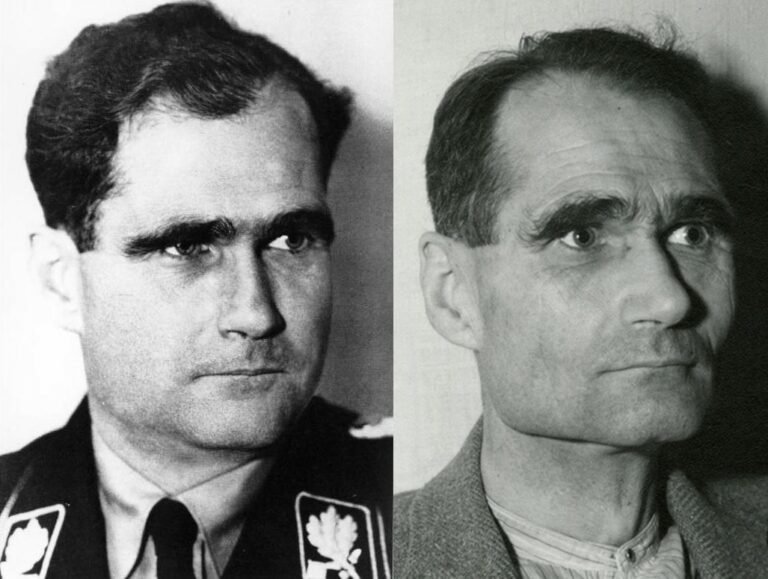
Did Rudolf Hess Really Commit Suicide? – Mythbusting Berlin
On a summer’s day in 1987, the last Nazi war criminal of the Nuremberg trials was found dead in a prison built for hundreds, yet for two decades, housed only him. The official verdict was suicide, a straightforward end to a life defined by fanaticism, delusion, and contradiction.
But the simplicity of the report belied the complexity of the man and the 46 years he had spent in Allied custody. In the meticulously controlled
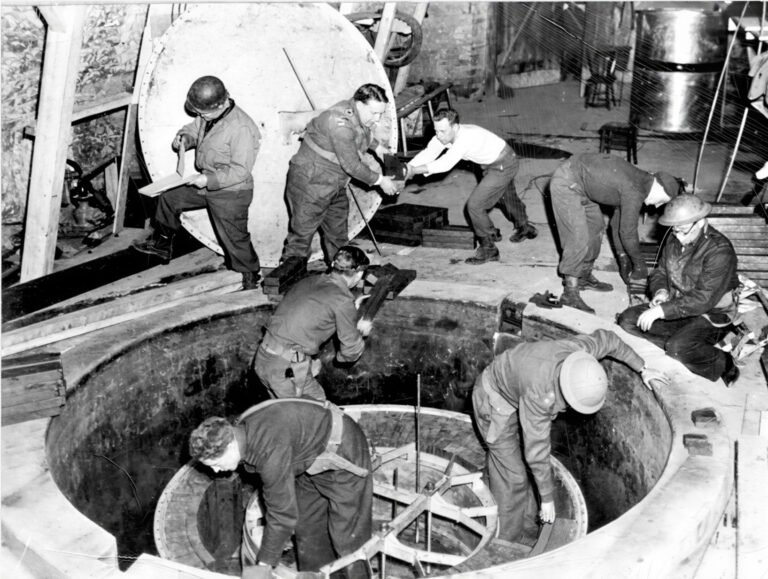
Did The Nazis Develop Nuclear Weapons? – Mythbusting Berlin
The Nazi obsession with super-weapons became so serious in the closing stages of the Second World that Adolf Hitler personally believed that such ‘Wunderwaffen’ both existed in a usable form – and would save the country from defeat. Had the Nazis managed to develop nuclear weapons by 1945 – the outcome of the war would surely have been different. But how close were Hitler, Himmler, and his henchmen to developing an A-bomb?

Did The Nazis Invent Decaf Coffee? – Mythbusting Berlin
Persistent rumors claim that Nazis preferred their coffee anything but pure, leading some to wonder if they might have influenced the development of decaffeinated coffee. Although decaf was already widely available across Europe by the mid-20th century, speculation continues: could the Nazis really have played a role in popularizing—or even discovering—this caffeine-free alternative, or is this simply another caffeinated conspiracy cooked up to sensationalize an ordinary historical detail?

Did The Nazis Invent The Bicycle Reflector? – Mythbusting Berlin
The fruits of wartime ingenuity are plenty – so many, in-fact, that it has become somewhat of a worn cliche that as the guns start firing the innovators get to work, often solving problems while providing more problems for the enemy to overcome.The kind of progress that results in the production of newer improved, more lethal weapons, such as to increase the chances of victory.
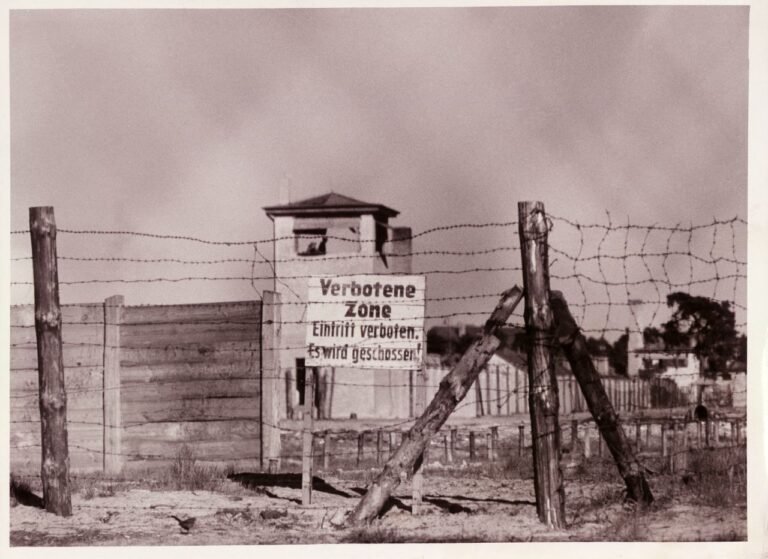
Did The Nazis Run The Largest Counterfeiting Operation In History – Mythbusting Berlin
During the Second World War the Nazis masterminded an astonishing plot to destabilise Britain by flooding its economy with counterfeit banknotes. Crafted in secret by concentration camp prisoners, this forged fortune became the most ambitious counterfeiting operation ever attempted. But was it history’s largest? Dive into the extraordinary tale of Operation Bernhard,
rife with deception, survival, and intrigue—revealing the truth behind one of the Third Reich’s most audacious schemes and its surprising legacy.
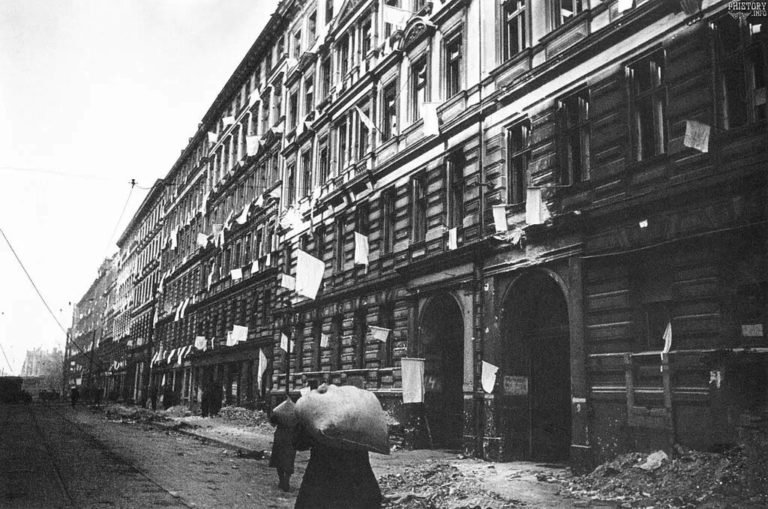
Did The Second World War End In Berlin? – Mythbusting Berlin
When is a war ever truly over? When the last shot is fired in anger would seem like the best measure. Rarely, though, is it possible to gain insight into such a moment.
Remarkably, a record still exists of such a moment at the end of the First World War on the Western Front. A seismic register and recording of the last belching battery of British guns firing artillery across no-man’s-land, followed by a profound
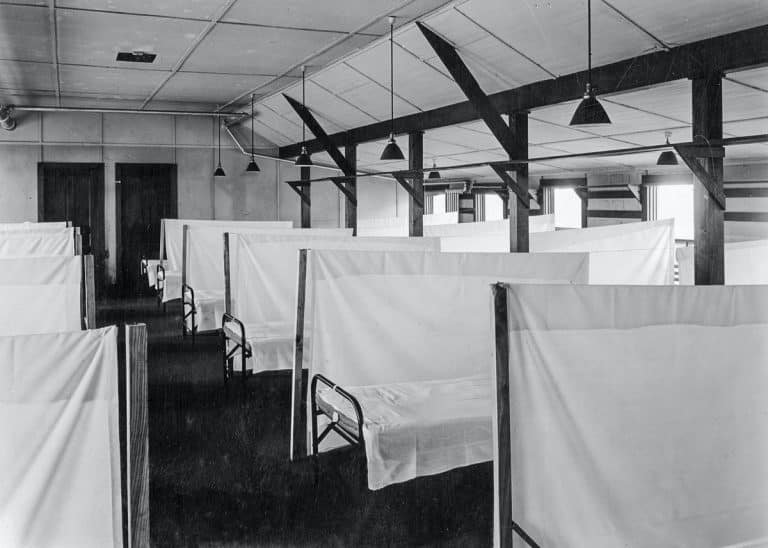
Did The Spanish Flu Pandemic Help The Nazis Take Power? – Mythbusting Berlin
The devastating Spanish Flu pandemic of 1918-1919 struck amid Germany’s post-war turmoil, compounding social instability, economic hardship, and widespread political disillusionment. Could this catastrophic health crisis have indirectly paved the way for Nazi ascension? While often overshadowed by war and revolution, the pandemic’s profound psychological and societal impacts arguably contributed to the perfect storm, enabling extremist ideologies—including Nazism—to gain popularity and ultimately seize power in a fractured Germany.

How Many Assassination Attempts On Adolf Hitler Were There? – Mythbusting Berlin
Nazi leader, Adolf Hitler, projected an aura of invincibility, a man of destiny shielded by providence. But behind the carefully constructed image of the untouchable Führer lies a story of constant threat, of bombs that failed to detonate, and errant bullets that missed their mark. Unearth the hidden history of the numerous attempts on Hitler’s life as we explore the courage of those who tried to change the course of history and the devil’s luck
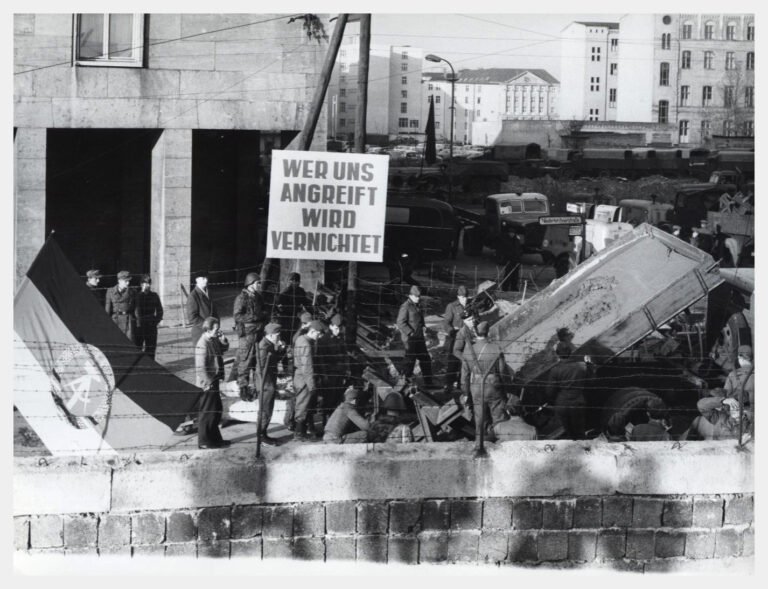
How Many People Died Trying To Escape East Germany? – Mythbusting Berlin
The image of the Berlin Wall is seared into our collective memory, a concrete symbol of Cold War oppression. We think of the daring escapes and the tragic deaths of those who failed. But that well-known number is only a fraction of the truth. The story of those who died trying to escape East Germany is far broader and more complex than most imagine, stretching along a thousand-kilometer border and out into the cold waters
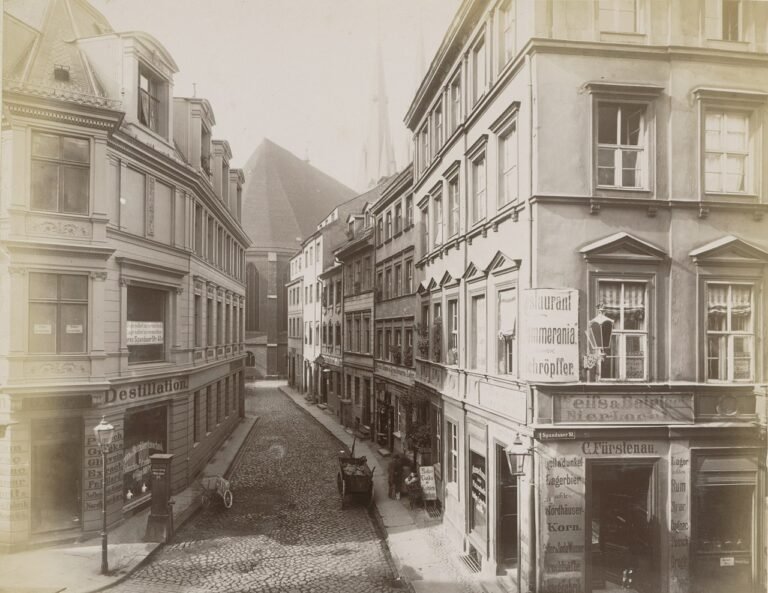
How Old Is Berlin? – Mythbusting Berlin
A relatively new arrival in Europe, Berlin is over 1000 years younger than London, nevermind Rome or Athens, Jerusalem or Jericho. Just how old is Berlin though?
A question fraught with false assumptions and distortions – that has more often than not been answered with propaganda as it has with the cold hard truth.
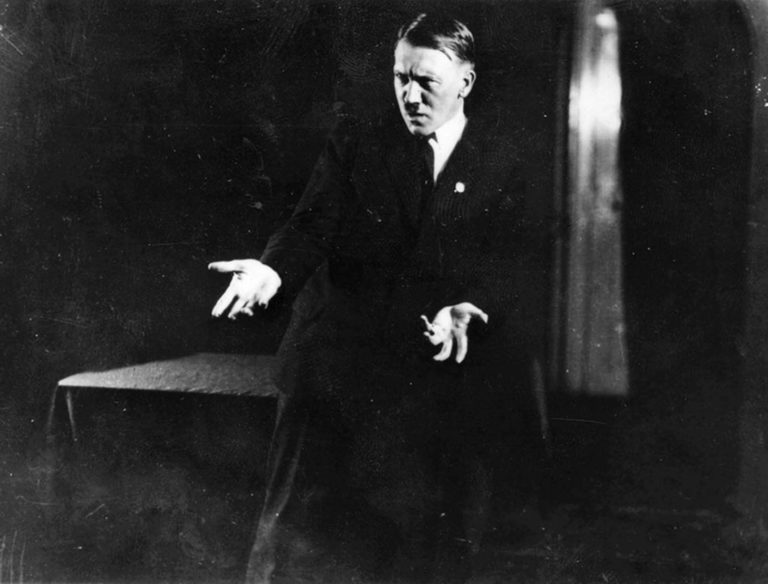
Was Adolf Hitler A Drug Addict? – Mythbusting Berlin
Solving the enigma of the ‘Führer’ has become a preoccupation for many, since the arrival of the Austrian-German onto the world stage – although moving beyond the mythology without falling into the trap of prejudically extrapolating on the psychopathography of Hitler or demonising so as to excuse his actions has proven problematic. What to make of the man who became more than the sum of his masks? The painter; the military dilettante, the mass murderer,

Was Adolf Hitler Gay? – Mythbusting Berlin
In the shadowy corridors of Third Reich history, few questions provoke as much tabloid curiosity and scholarly exasperation as the sexuality of Adolf Hitler. For decades, rumors have swirled—whispered by political enemies in 1930s Munich, psychoanalyzed by American spies in the 1940s, and sensationalized by revisionist authors today. Was the dictator who condemned thousands of men to concentration camps for “deviant” behavior hiding a secret of his own? By peeling back the layers of propaganda,
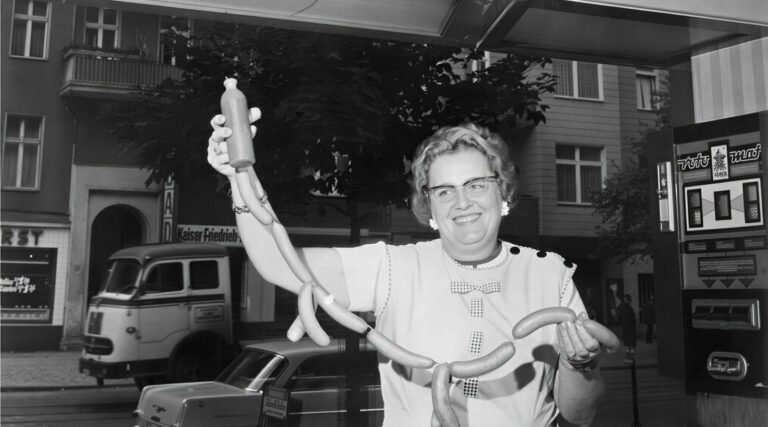
Was Currywurst Invented In Berlin? – Mythbusting Berlin
Explore the story behind what many consider Berlin’s most iconic snack—the ever-so-humble Currywurst. Often hailed as an enduring symbol of culinary creativity amid Cold War scarcity, this humble dish has inspired fierce debate about its true origin. But was it genuinely invented here in Berlin, or have proud locals simply adopted and elevated this spicy street-food favorite into legendary status all their own?

Was Fanta Invented By The Nazis? – Mythbusting Berlin
As one of the most secretive organisations in the world, the Coca Cola corporation refuses to share its secret recipe with anyone. Famously insisting only on shipping the base syrup of its drinks to plants around the world to be carbonated and distributed.
This combined with the trade limitations of the Second World War may have led to the introduction of one of the most popular soft-drinks in the world. But could it be true:
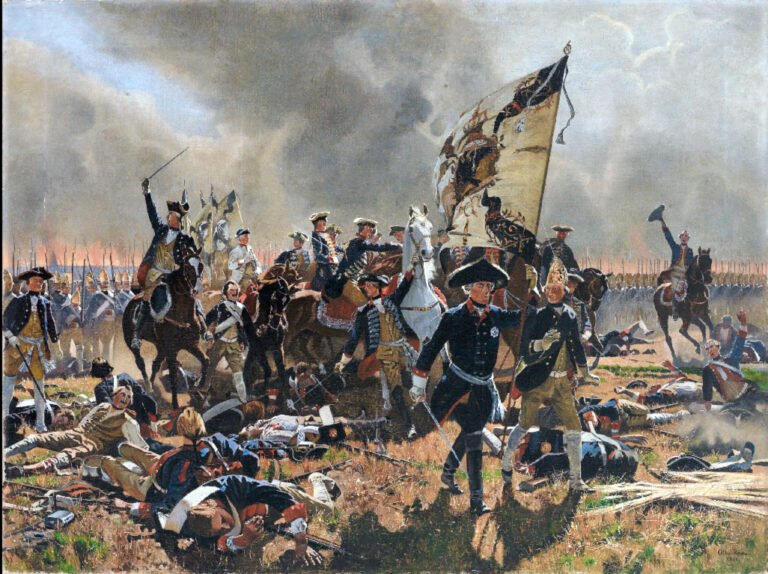
Was Frederick The Great Gay? – Mythbusting Berlin
Frederick II of Prussia, better known as Frederick the Great, is often remembered as the archetypal enlightened monarch – a brilliant military commander, patron of the arts, and learned philosopher. Yet behind the stern portraits of this 18th-century warrior-king lies a personal life long shrouded in intrigue and speculation. Intrigue around the king’s sexual orientation has persisted through the centuries, chiefly revolving around one question: Was Frederick the Great gay?
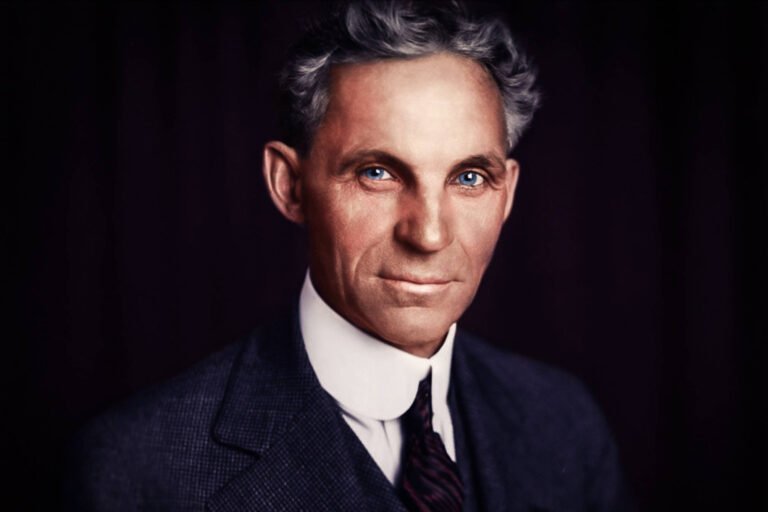
Was Henry Ford A Nazi? – Mythbusting Berlin
US auto tycoon, Henry Ford, holds the ignominious distinction of being the only American Adolf Hitler praised by name in his National Socialist manifesto: ‘Mein Kampf’. This was not, as it turns out, the only connection between Ford and the Party of Hitler, Himmler, and the Holocaust.
Ford’s overt affinity with the Third Reich reveals a troubling past. How deep these connections ran, and how consequential they were for both sides, is a chapter



